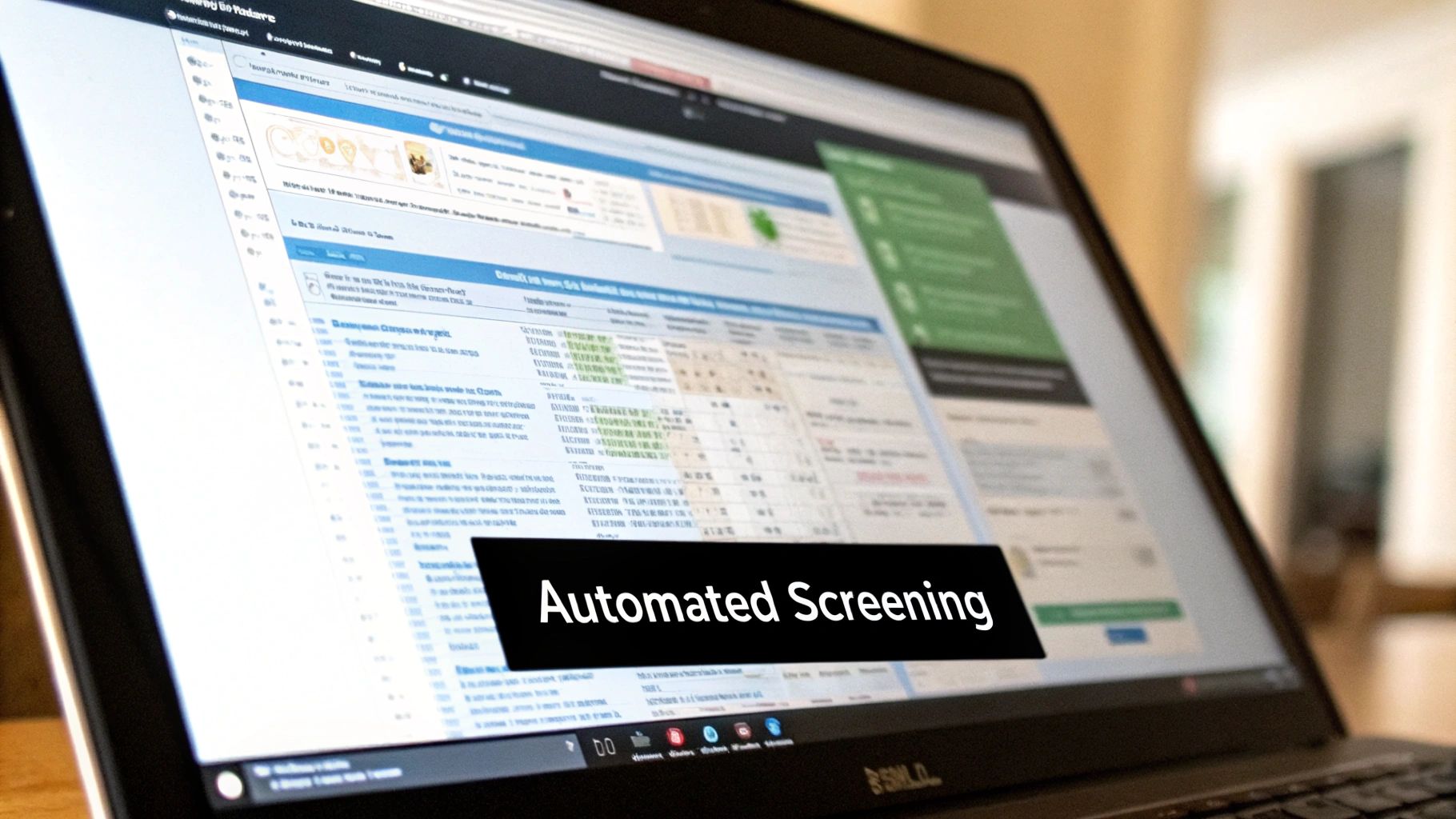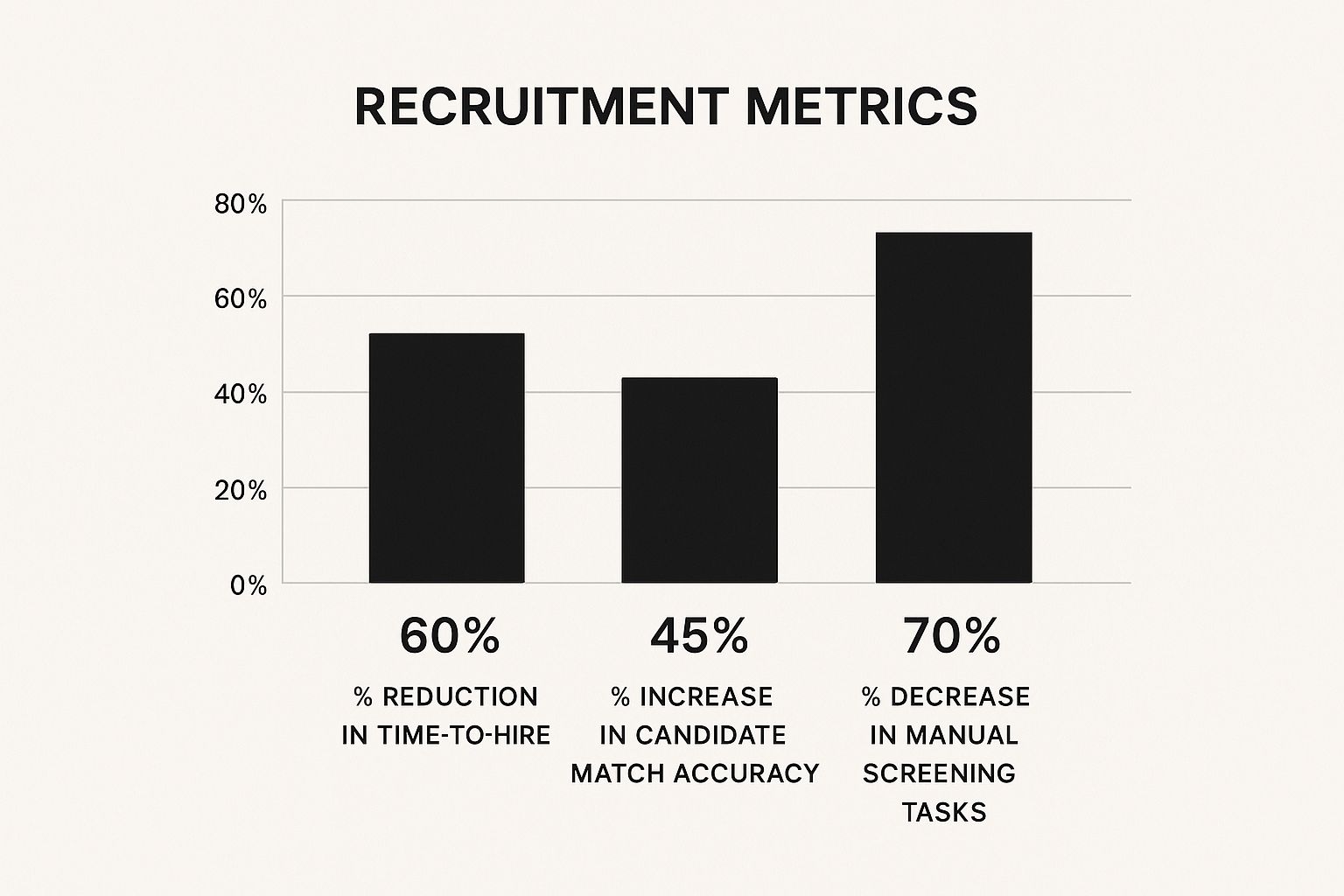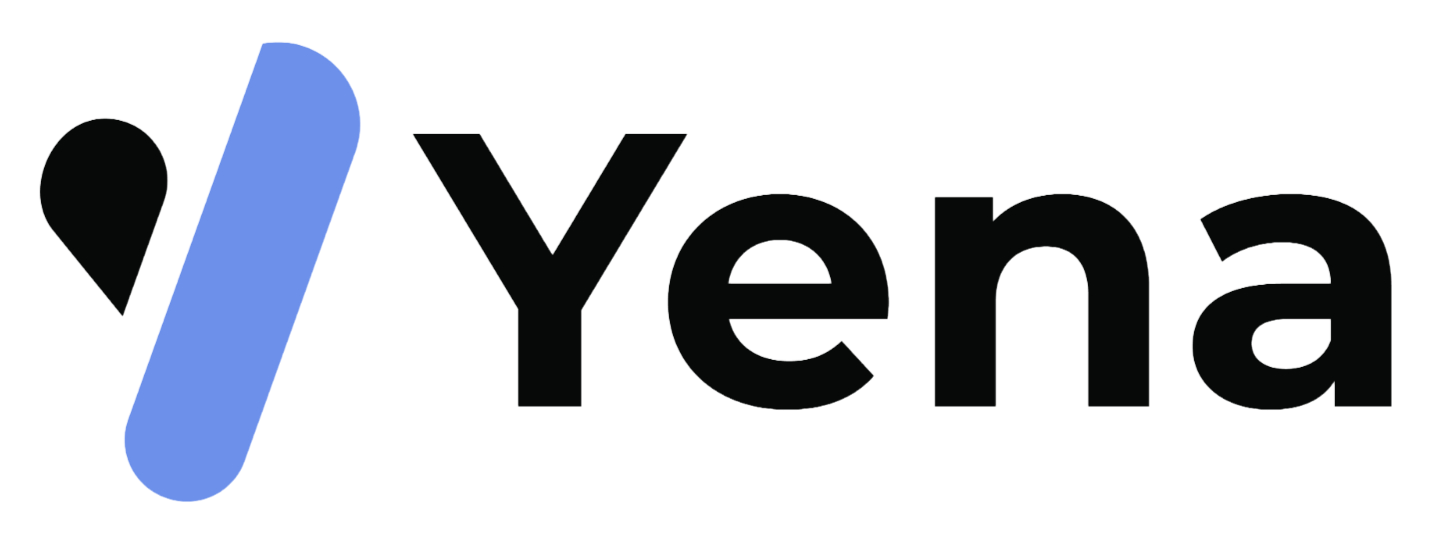Your Guide to Applicant Tracking Systems
- Janis Kolomenskis
- Sep 15
- 16 min read
Feeling like you're drowning in a sea of CVs? Imagine having a smart digital assistant that sorts, organises, and flags the absolute best candidates for you. That's the magic of an Applicant Tracking System (ATS) – think of it as your new recruitment command centre.
What Are Applicant Tracking Systems, Anyway?

Let's be honest, the old way of hiring can be a nightmare. We've all been there: overflowing email inboxes, messy spreadsheets, and sticky notes everywhere trying to keep track of hundreds of applicants for just one role. It’s an administrative black hole that sucks up time and energy you should be spending on finding the right person.
An Applicant Tracking System completely flips that script. It takes all that chaos and turns it into a clean, organised, and efficient workflow. At its heart, an ATS is a piece of software that acts as a central hub for your entire hiring process, collecting and storing every application in a single, searchable database. It's your digital filing cabinet, but way smarter.
From Manual Mayhem to Automated Magic
The real game-changer with applicant tracking systems is automation. Forget about manually reading every single CV that lands in your inbox. The system does the heavy lifting for you, automatically scanning and parsing CVs to pull out key details like skills, work history, and contact information. This means your recruiters can instantly search and filter candidates using the exact criteria they need.
And it doesn't stop there. A modern ATS takes on a whole host of tedious, repetitive tasks, such as:
Scheduling interviews without the endless email tennis.
Sending automated updates to candidates so they're never left in the dark.
Gathering feedback from the entire hiring team in one tidy place.
By handling these administrative chores, the system frees up your team to focus on what humans do best: building relationships with top talent and conducting brilliant interviews. It’s a massive shift from being buried in paperwork to proactively building your dream team.
Why Every Modern Business Needs an ATS
Using an ATS isn't just a "nice-to-have" for big corporations anymore; it’s become a must-have for businesses of every size. The proof is in the numbers: an incredible 98.4% of Fortune 500 companies now rely on an ATS to manage their hiring. This isn't just a trend; it's the new standard for smart, data-driven recruitment.
This shift is especially powerful here in Germany, where digital transformation is at the top of the agenda for so many businesses. The German market for applicant tracking systems is booming as companies eagerly adopt these tools to modernise their HR functions and build smoother recruitment pipelines.
A great ATS does so much more than just track applicants. It becomes the beating heart of your entire talent acquisition strategy, driving consistency, boosting team collaboration, and ultimately, helping you make better hires.
The right system doesn't just make your recruiters' lives easier; it also massively improves the experience for your candidates. When you provide clear, timely communication and a simple application process, you’re also building a stronger employer brand. You can dive deeper into this in our guide on mastering the modern applicant experience. This dual focus on internal efficiency and external experience is exactly why applicant tracking systems are now a cornerstone of modern hiring.
What's Really Under the Hood of a Modern ATS?

So, what exactly makes these recruitment tools tick? Let me tell you, a modern applicant tracking system is so much more than a glorified digital filing cabinet. They are absolutely packed with features designed to make every single stage of hiring smarter, faster, and way more collaborative.
Let’s pop the bonnet and explore the essential parts that turn a simple database into a genuine recruitment powerhouse.
At its most basic, an ATS automates the soul-crushing task of collecting and organising applications. Remember the days of manually saving CVs from emails into a chaotic mess of folders? Gone. The system brings every application into one central hub, creating a single source of truth for your entire talent pool.
This immediate organisation is where the real magic starts. The system doesn't just store documents; it intelligently reads and understands them.
Intelligent CV Parsing and Profile Creation
One of the most game-changing features has to be CV parsing. Think of it as your own super-smart assistant who reads every CV that comes in and automatically pulls out the vital information. It identifies and categorises details like contact info, work history, education, and specific skills, instantly building a structured, searchable profile for each person.
What does this actually mean for you? It means you can search your entire database for a "software developer with five years of Java experience" without ever opening a single file. This alone saves countless hours of manual screening and makes sure you never miss out on a fantastic candidate who applied for a different role months ago.
Today's parsers go even further. The ones you'll find in AI-native platforms like Yena’s Smart CV Parser enrich these profiles with incredibly accurate, high-fidelity data. This creates a much richer, more detailed candidate database for your team to really sink their teeth into.
Customisable Hiring Pipelines and Workflows
Let's face it, every company hires a little differently. A great ATS gets this and gives you fully customisable hiring pipelines. This feature lets you visually map out your unique recruitment stages—from "New Applicant" and "Initial Screening" all the way to "Technical Interview" and "Offer Extended."
You can then simply drag and drop candidates from one stage to the next. The result? Your entire team gets a real-time, bird's-eye view of where every single candidate is for every open position. This visual clarity is a game-changer for working together and spotting any bottlenecks in your process.
A well-structured hiring pipeline doesn't just organise your work; it standardises your process. This ensures every candidate receives a consistent and fair evaluation, strengthening your hiring quality and employer brand.
Advanced Automation and Communication Tools
Okay, here’s where an ATS truly flexes its muscles. Automation is about so much more than just parsing CVs. Modern systems can handle a huge chunk of the communication tasks that typically eat up a recruiter's day.
Just look at what they can do:
Automated Candidate Messaging: Instantly send confirmation emails when an application lands, or automatically let candidates know when they've moved to the next stage. No more radio silence!
Interview Scheduling: Say goodbye to the endless back-and-forth emails. The system can sync with your team's calendars and let candidates book available slots themselves. It’s a lifesaver.
Internal Team Collaboration: You can tag colleagues in candidate notes, assign follow-up tasks, and gather feedback seamlessly right inside the platform. All communication, all in one place.
This level of automation frees your team from the administrative grind, letting them focus on what really matters: building genuine relationships with top-tier talent. It also massively improves the candidate experience by keeping applicants in the loop every step of the way.
Reporting and Analytics Dashboards
Finally, you can't improve what you don't measure. The best applicant tracking systems come equipped with seriously powerful reporting and analytics dashboards. These tools turn all your recruitment activities into insights you can actually use.
With just a few clicks, you can track critical metrics like:
Time-to-Hire: How long is it really taking to fill a role, from the day you post it to the day an offer is accepted?
Source of Hire: Which job boards or channels are actually delivering the goods? Where are your best candidates coming from?
Pipeline Health: Where are candidates dropping off in your process? Is there a bottleneck at the interview stage?
These insights give you the power to make data-driven decisions, fine-tune your strategy, and confidently show the ROI of your recruitment efforts to the higher-ups.
The Real-World Benefits of Using an ATS
So, we've talked about what an ATS does, but let's get to the good stuff: what kind of incredible results can you actually expect? This isn't just about tidying up your hiring process. We're talking about a complete overhaul, turning what was once a slow, admin-heavy chore into your company's secret weapon for talent acquisition.
Think of it this way. Without an ATS, your hiring team is trying to conduct an orchestra with sheet music scattered everywhere, shouting instructions to keep everyone in time. It's chaotic. An ATS hands them a conductor's podium, a complete musical score, and a perfectly tuned ensemble. The difference in the music they create is simply staggering.
When you bring this technology on board, you’re not just buying software. You're investing in speed, quality, and a fantastic experience for everyone involved.
Dramatically Reduce Your Time to Hire
One of the first things you'll notice is how much faster you can fill a role. It's a massive, immediate win. Manual processes are notoriously slow, creating endless bottlenecks from sifting through CVs to locking in interview times. An ATS automates all that grunt work, literally collapsing weeks of effort into just a few days.
By instantly parsing CVs, shortlisting the best candidates, and making communication a breeze, the system cuts out all that dead time. This means you can get top talent in front of your hiring managers faster than your competitors can—a huge advantage when everyone's fighting for the best people. A speedy process keeps candidates excited and stops them from accepting another offer while they're waiting to hear back from you.
The impact isn't just a feeling; it's measurable across the board.

This table quantifies the typical improvements businesses experience after implementing an Applicant Tracking System, showcasing the tangible benefits across different areas of the hiring process.
Impact of ATS on Key Recruitment Metrics
Recruitment Metric | Before ATS (Typical Scenario) | After ATS (Average Improvement) |
|---|---|---|
Time-to-Hire | 40-50 Days | 20-25 Days (Up to 50% faster) |
Cost-per-Hire | £3,000 - £5,000+ | Reduced by 20-30% |
Candidate Quality | Subjective, inconsistent | 25% increase in quality hires |
Admin Time | 10-15 hours/week | 2-4 hours/week (75% reduction) |
Candidate Experience | Poor (long waits, no updates) | Highly positive (fast, communicative) |
As the numbers show, an ATS doesn't just make small tweaks. It fundamentally boosts efficiency and effectiveness, turning recruitment into a well-oiled machine.
Elevate the Quality of Your Hires
Getting people through the door faster is great, but it's only half the battle. The real prize is hiring better people, and this is where an ATS truly shines. It gives you the tools to move beyond gut feelings and make consistent, data-driven decisions.
With features like standardised scorecards and collaborative feedback tools, you can ensure every candidate is measured against the same objective criteria. This structured approach helps strip away unconscious bias and keeps the entire team laser-focused on the skills and competencies that actually matter for the role.
An ATS becomes your single source of truth for all things hiring. It organises every piece of candidate information and team feedback into a clear, actionable dashboard, empowering you to spot and secure the absolute best talent for every single opening.
The system's powerful search functions also let you build and tap into your very own talent pool. That amazing candidate who wasn't quite right for one role might be the perfect fit for the next one. An ATS makes sure they’re never forgotten. This is the kind of strategic thinking you can build on as you unlock analytics for HR to power your talent strategy.
Enhance Your Employer Brand and Compliance
In today's market, the candidate experience is everything. A clunky, slow, or confusing application process can seriously damage your company's reputation and scare away the best people before they even finish applying. An ATS helps you design a smooth, professional, and communicative journey for every applicant. Automated updates keep candidates in the loop, which reflects brilliantly on your employer brand.
This became crystal clear during the COVID-19 pandemic, which massively accelerated the adoption of applicant tracking systems in Germany. The sudden shift to remote work forced companies to digitise their hiring. The ones already using an ATS saw up to a 40% improvement in recruitment efficiency, all thanks to features like digital interview scheduling and automated communications.
Finally, an ATS is your best friend when it comes to navigating complex data protection laws like GDPR. It provides a structured, secure way to manage candidate data, handle consent, and process deletion requests, making sure you stay compliant without even breaking a sweat.
How to Choose the Right ATS for Your Business

Ready to find the perfect ATS for your team? Fantastic! Diving into the world of applicant tracking systems is a massive step forward, but it definitely doesn't have to be a headache. The best way to think about it isn't as just buying software, but more like hiring a new, incredibly efficient team member. The goal is to find the perfect fit for your company’s unique culture and hiring ambitions.
The real secret isn't chasing the system with the longest, most dazzling feature list. It's about getting brutally honest about your biggest hiring headaches and then finding a platform specifically built to make them disappear. This guide will give you a straightforward framework to help you make a choice you can feel great about.
Start by Defining Your Core Needs
Before you even think about booking a demo, it's time for a little soul-searching. Get your hiring managers and recruiters in a room and start asking the tough questions. Honestly, this first step is the most critical one you'll take, as it builds the scorecard you'll use to judge every option that comes your way.
Kick off the discussion with these key areas:
Biggest Pain Points: Where do things get stuck? What are the most frustrating bottlenecks in your current process? Is it the flood of CVs, the chaos of scheduling interviews, or a total lack of collaboration between team members?
Must-Have Features: What are the absolute non-negotiables? Do you desperately need powerful reporting dashboards, flawless calendar integration, or maybe AI-powered candidate matching?
Team Size and Tech-Savviness: How many people will actually be using this thing, and what's their comfort level with new tech? A clean, intuitive interface is non-negotiable for getting everyone on board quickly.
Nailing down these answers first stops you from getting distracted by flashy gadgets you'll never actually use. It keeps you laser-focused on what's going to deliver genuine, day-one value to your team.
Evaluate Scalability and Integrations
Your business isn't standing still, and your applicant tracking system shouldn't be either. One of the most important things to look for is scalability. Ask yourself: will this platform grow with us? You need a system that can handle your hiring needs not just today, but two or three years from now as your company hits its goals.
Just as important are integrations. Your ATS doesn't live on an island; it needs to connect seamlessly with the tools you already use every single day. Look for native integrations with essentials like your email client (think Outlook or Gmail), team calendars, and any HR software you’re already using. A well-integrated system creates a single source of truth, saving you from the nightmare of bouncing between a dozen different apps.
The right ATS should feel like the central hub of your HR tech stack, not just another isolated tool. Seamless integrations are the key to unlocking maximum efficiency and a truly unified workflow.
Prioritise User Experience and Support
Let’s be real—a powerful ATS is completely useless if your team finds it clunky and confusing to use. A clean, intuitive user interface isn’t just a nice-to-have; it's absolutely essential for adoption. As you go through demos, pay close attention to the feel of the platform. Does it flow logically? Can you find what you need without cracking open a user manual? If it feels complicated to you, it will be a nightmare for your team.
And please, don't underestimate the power of amazing customer support. A great vendor becomes a true partner, offering solid onboarding, training, and a responsive help desk when you hit a snag. Ask them about their support channels and how quickly you can expect a response. This partnership can make all the difference. In fact, German recruiters have a clear preference for systems that offer deep customisation and strong integration capabilities. A recent survey of 2,500 German recruiters found that nearly 70% saw a major drop in their time-to-hire after switching to an ATS that streamlined their screening process.
Understand the Pricing Models
Finally, let's talk about the budget. ATS pricing can be all over the map, so it’s vital to understand the different models out there. Most platforms will charge per user (or "seat") each month, which is often a great setup for smaller teams. Others might base their price on the number of open roles you have or the total number of employees in your company. Always be on the lookout for hidden costs for things like implementation, data migration, or premium support.
While price is obviously a factor, try not to let it be the only one. Sometimes, a slightly more expensive system that perfectly solves your core problems will deliver a much higher return on investment than a cheaper tool that just doesn't fit. If you're just starting out or working with a tight budget, you might want to check out our guide on the [12 best free applicant tracking system tools in 2025](https://www.yena.ai/post/12-best-free-applicant-tracking-system-tools-in-2025). It’s a fantastic way to dip your toes in the water before making a bigger commitment.
Getting the Most Out of Your ATS
Right, so you've picked out a shiny new applicant tracking system. Fantastic! But here’s the thing: just buying the software is the easy part. To really get your money's worth, you need to weave it into the very fabric of how you hire. It's about turning a cool piece of tech into the beating heart of your recruitment engine.
This is where you go from just organising candidates to actively accelerating your entire hiring process. A few smart habits can make your team more efficient, your decisions sharper, and your results way more predictable. Let's get into the practical stuff that will make your ATS a true game-changer.
Get Your Whole Team on Board
A powerful tool is useless if nobody knows how to use it properly. You wouldn't hand over the keys to a high-performance car without a lesson, and your ATS is no different. Every single person touching the hiring process—from recruiters to the hiring managers themselves—needs solid, consistent training. This is non-negotiable.
Training isn't just about showing people which buttons to click. It’s about getting everyone to understand why you're doing things a certain way and how it all fits together. When people get it, they actually use the system. You'll see better data, smoother collaboration, and far fewer headaches. Suddenly, your ATS isn't a chore; it's the central hub where everything happens.
The real goal of training isn't just to cover features. It's to build a shared culture around using your applicant tracking system to hire smarter, faster, and more fairly across the entire business.
A well-trained team means no more rogue spreadsheets or chaotic email chains. All that crucial candidate info stays exactly where it should be: neatly logged inside your ATS.
Write Job Descriptions for Humans and Robots
These days, your job descriptions have two very different readers: the talented people you want to hire, and the clever algorithms inside your ATS. You’ve got to write for both. That means using exciting, clear, and inclusive language that gets a great candidate to click "apply," while also packing it with the right keywords the system needs to find them in the first place.
Think of it as SEO for your jobs. When you sprinkle in the specific skills and qualifications for the role, you're making it dead simple for the ATS to pull the best-matched people out of the pile. Our guide on writing a job description that actually attracts top talent goes way deeper on how to nail this.
Create a Standard Playbook for Evaluations
If you want to make brilliant hires every time, you need a brilliant evaluation process that’s the same for everyone. Your ATS is the perfect place to build and enforce this. It's time to move beyond "gut feelings" and create standardised scorecards for each role, right inside the system.
This is a massive step towards fairness. It forces every interviewer to judge candidates on the same set of important criteria, not just on who they liked the most. It also gives you a goldmine of structured data. Down the line, you can look back and see which interview questions actually predict who will be a star performer, letting you fine-tune your approach for the future.
A simple scorecard might look something like this:
Technical Skills: How strong are they? (Rated 1-5)
Problem-Solving: Can they think on their feet? (Rated 1-5)
Teamwork: Will they collaborate well? (Rated 1-5)
Interview Notes: Specific examples of what they said or did.
By using simple features like this, you're swapping biased, messy feedback for a structured, data-backed process. And that’s how you start raising the bar with every single hire.
Got Questions About Applicant Tracking Systems? We've Got Answers.
Jumping into the world of applicant tracking systems can feel like a massive leap, and it's completely normal to have a few questions buzzing around. It's a big decision, after all, and you want to be certain you're making the right move for your team.
We get it! That’s why we’ve put this section together to tackle the most common questions and clear up any confusion. Think of this as your go-to guide, here to give you the clarity and confidence you need to take the next step. Let's dive in and bust some myths!
Will an Applicant Tracking System Automatically Reject Good Candidates?
This is probably the biggest fear we hear, and it's totally understandable. But here’s the good news: it's largely a myth. A modern, well-built ATS isn't designed to make cold, robotic hiring decisions. Its real job is to help humans make better, more informed ones.
Think of it less as a harsh gatekeeper and more like a brilliant research assistant. Today’s sophisticated systems use clever technology to understand context that goes way beyond simple keywords. It doesn’t just hunt for buzzwords; it analyses skills, experience, and qualifications to bubble the most relevant profiles right to the top of your list.
This means your team can finally stop wasting precious hours manually sifting through hundreds of completely unqualified applications. Instead, they can focus their energy where it really counts: talking to the top contenders who could be a fantastic fit.
Are Applicant Tracking Systems Only for Large Corporations?
Not anymore! While it's true that huge global companies were the first to adopt this technology, the game has completely changed. These days, the market is packed with incredible ATS solutions built specifically with small and medium-sized businesses in mind.
You no longer need a colossal budget or a dedicated IT department to get in on the action. Many of the best providers now offer flexible, cloud-based platforms with scalable pricing plans that can grow right alongside your business.
For a small or growing business, an ATS can be a massive competitive advantage. It levels the playing field, allowing you to punch well above your weight by automating the admin grind and freeing up your team for more strategic work.
This shift has been a game-changer, making powerful recruitment technology available to companies of every shape and size.
How Difficult Is It to Implement a New Applicant Tracking System?
The thought of rolling out new software can definitely be intimidating, but it’s often much smoother than you might expect. Most modern applicant tracking systems are designed to be user-friendly and straightforward to set up. The days of year-long, complicated implementations are long gone.
Reputable vendors know that a clunky setup is a recipe for disaster, so they make it a top priority to get you up and running quickly. A good partner will provide you with:
Dedicated Onboarding Support: A real person who guides you through every single step.
Data Migration Assistance: Help to safely and accurately move your existing candidate data into the new system.
Comprehensive Team Training: Interactive sessions to make sure everyone feels confident and ready to hit the ground running.
Depending on what you need, the entire process can take anywhere from a few days to a few weeks. The key is to choose a provider known for outstanding customer support—that’s your ticket to a seamless and stress-free transition.
Can an ATS Help with Diversity and Inclusion Goals?
Absolutely! In fact, an ATS can be one of the most powerful tools in your kit for building a more equitable and fair hiring process. It helps you move away from subjective "gut feelings" and towards objective, data-driven decisions.
Many systems come with features specifically designed to reduce the impact of unconscious bias during screening. This can include things like:
Anonymised CV Screening: This feature hides personal details like names, photos, or university graduation dates during the initial review.
Standardised Evaluation Scorecards: By making sure every candidate is assessed using the exact same job-related criteria, you create a more consistent and merit-based evaluation.
Structured Feedback: This prompts interviewers to provide specific, evidence-based comments rather than vague, subjective opinions.
By embedding these practices directly into your workflow, an ATS helps you build a fundamentally fairer process that gives every single candidate an equal opportunity to shine. It's a fantastic way to proactively support your diversity and inclusion initiatives and build a stronger, more representative team.
Ready to see how an AI-native recruitment platform can transform your hiring process? Yena consolidates your entire workflow into a single, powerful operating system. Book a demo today and discover how to reduce your time-to-hire by 40% and increase placement rates by 25%.

Comments